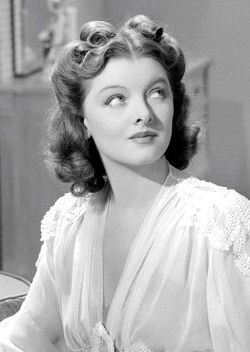 If I’m doing a list for William Powell, then I should do one for Loy, and even more so as this is an easy list to make—it has a great deal of overlap with my Powell list (I’ll even keep some of the brief descriptions).
If I’m doing a list for William Powell, then I should do one for Loy, and even more so as this is an easy list to make—it has a great deal of overlap with my Powell list (I’ll even keep some of the brief descriptions).
Loy was as Northern European as they come, but her unusual beauty got her typecast in “exotic” roles–Asians, Arabs, Indians, and Gypsies. She started to wiggle out of this a bit, but it wasn’t until The Thin Man with William Powell that things changed—then she was typecast as “the perfect wife,” although in better films with a higher salary. It was in her co-staring films with Powell—fourteen in total—where she shined. Outside of those, she had some good roles, but had a large number of melodramatic romances and over-done dramas. (As with Powell, I am only referring to her talkies. I have missed too many of her silent and “part-talkie” pictures to voice an opinion).
Honorable mentions go to her comedy with Cary Grant, Mr. Blandings Builds His Dream House (1948), the only Thin Man movie not to make the top 8, The Thin Man Goes Home (1945), and the remaining Powell/Loy screwball comedy, Love Crazy (1941). Also, an honorable mention goes to The Best Years of Our Lives (1946), an important movie with a vital political and moral message dealing with the aftermath of war. However, it passes being drama on its way to becoming a lecture and approaches a sermon. It’s heart is in the right place and it makes that really, really clear.
And a mention–somewhat honorable, somewhat dishonorable–for The Mask of Fu Manchu (1932), where she plays the evil Chinese daughter of that well know Chinese actor Boris Karloff. Racial issues aside (and they aren’t going anywhere), it is a fascinating and sometimes fun picture. Karloff and Loy are amazing in a movie she was happy to forget.
8 – Song of the Thin Man (1947) – Nick and Nora were characters of the ’30s (they’d have fit in the ’20s as well). The ’40s didn’t work as well for them. The 5th film in the series had tried to restrain them (Nick giving up drinking and worrying about how his father saw him) to make them more acceptable. This 6th film allows them to be themselves, and simply makes them out of step with the world. That works well enough as the characters are what makes the films work. This is a fine end to one of the great film series.
7 – The Bachelor and the Bobby-Soxer (1947) – A twisted romantic comedy with Cary Grant as a bohemian artist (Hollywood-style) and Myrna Loy as a stiff Judge. Grant is forced to pretend he is as taken with teenage Shirley Temple as the teenager is with him. I’m thinking this movie wouldn’t be made now, and the world is poorer for it. Remembered for this exchange: “Hey, you remind me of a man. What man? Man with the power. What power? Power of hoodoo. Hoodoo? You do. Do what? Remind me of a man…”
6 – Shadow of the Thin Man (1941) – The 4th Thin Man film and the 4th best. Powell and Loy are as good as ever, the dialog is solid, and the mystery is fun. It is now clear that adding a child was a bad idea, as well as a servant, but otherwise, the series is still going strong.
5 – I Love You Again (1940) – It may not be a Thin Man movie, but it’s still Powell and Loy. This time Powell has been an obnoxiously straight-laced boor who wakes up after a blow on the head to realize he’s had amnesia for years, and is really a con artist. [Also on the William Powell list]
4 – Libeled Lady (1936) – Powell and Loy again in a four-way romantic comedy with Spencer Tracy and Jean Harlow. Powell is hired to stop Loy from suing a newspaper for libel, any way he can. [Also on the William Powell list]
3 – Another Thin Man (1939) – The third Thin Man film and its nearly as good as the first two. Nick and Nora have to deal with murder connected to Nora’s father’s business partner. Like the others, it is great fun. [Also on the William Powell list]
2 – After the Thin Man (1936) – Much like the first Thin Man film, but with Jimmy Stewart added, this is a very close second place. Taking place soon after that film, the pair is summoned by Nora’s snobbish family because a husband is missing and Aunt Katherine wants to avoid scandal. The relationship is wonderful, the humor is spot on, and the mystery is engaging. [Also on the William Powell list]
1 – The Thin Man (1934) – She’s a rich socialite; he’s a retired PI (now living the high life on her money) who gets sucked into a murder case. Funny and charming, this introduction of Nick and Nora Charles is as good a time as you can have at the cinema. I lucked out, getting to see it on a big screen around 50 years after its release. The mystery stuff is good, but it is the husband and wife interactions that make this film special; they are my favorite couple after Gomez And Morticia Addams. [Also on the William Powell list]
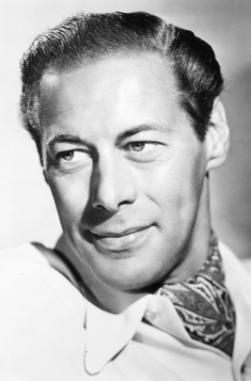 I think of Rex Harrison as one of the great actors, yet “great” is not a word I use with his most famous films. Doctor Dolittle, Anna and the King of Siam, The Agony and the Ecstasy, The Yellow Rolls-Royce, and Cleopatra are all fine, watchable flicks, but no masterpieces, and I normally don’t even call them good without some kind of qualification. (My Fair Lady is a level up, but I still qualify any compliments I give it.)
I think of Rex Harrison as one of the great actors, yet “great” is not a word I use with his most famous films. Doctor Dolittle, Anna and the King of Siam, The Agony and the Ecstasy, The Yellow Rolls-Royce, and Cleopatra are all fine, watchable flicks, but no masterpieces, and I normally don’t even call them good without some kind of qualification. (My Fair Lady is a level up, but I still qualify any compliments I give it.) Edward G. Robinson was one of the kings of early gangster cinema (along with Jimmy Cagney, George Raft, and their second banana, Humphrey Bogart).Things changed in a decade, with old-style crime movies fading, replaced by war movies and
Edward G. Robinson was one of the kings of early gangster cinema (along with Jimmy Cagney, George Raft, and their second banana, Humphrey Bogart).Things changed in a decade, with old-style crime movies fading, replaced by war movies and 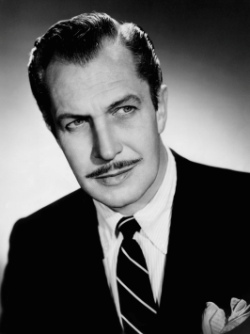 The 4th of the Big Three horror icons (of sound films), like Karloff before him, Vincent Price had a liquid-jeweled voice and range. Price’s early work was more often in
The 4th of the Big Three horror icons (of sound films), like Karloff before him, Vincent Price had a liquid-jeweled voice and range. Price’s early work was more often in 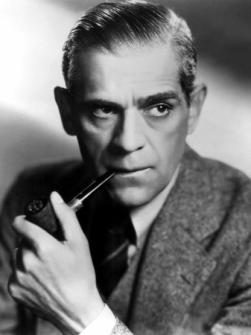 The second of the Big Three horror icons (
The second of the Big Three horror icons (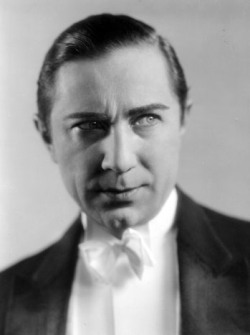 Lugosi had a presence, a charisma, that shaped scenes and entire films. Was he a good actor? It’s hard to say. He wasn’t really given a chance. With his thick accent and less-than-perfect English, his roles were going to be limited. Add in the tendency to pigeonhole horror actors and his own poor choices, and he ended up with a troubled career. But he had a few moments, and those have made him an icon.
Lugosi had a presence, a charisma, that shaped scenes and entire films. Was he a good actor? It’s hard to say. He wasn’t really given a chance. With his thick accent and less-than-perfect English, his roles were going to be limited. Add in the tendency to pigeonhole horror actors and his own poor choices, and he ended up with a troubled career. But he had a few moments, and those have made him an icon. When I was a child in the ‘60s, Stanwyck was known primarily as a television Western star. But time is not kind to TV shows in general and particularly not to Westerns, so that work is fading from cultural memory, which is for the best in this case as she should be remembered first as a film actress.
When I was a child in the ‘60s, Stanwyck was known primarily as a television Western star. But time is not kind to TV shows in general and particularly not to Westerns, so that work is fading from cultural memory, which is for the best in this case as she should be remembered first as a film actress. If I’m doing a list for William Powell, then I should do one for Loy, and even more so as this is an easy list to make—it has a great deal of overlap with my
If I’m doing a list for William Powell, then I should do one for Loy, and even more so as this is an easy list to make—it has a great deal of overlap with my 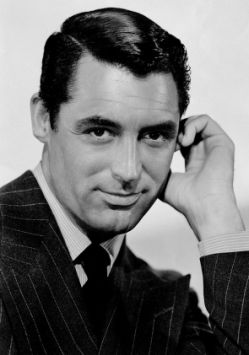 I’ve written before that
I’ve written before that  In old Hollywood, that sold the appearance of sophistication, Powell was the sophisticate’s sophisticate. No one was smoother. He was class personified. I like him in any movie, even when the movie is not so good. No matter the part, Powell made it better.
In old Hollywood, that sold the appearance of sophistication, Powell was the sophisticate’s sophisticate. No one was smoother. He was class personified. I like him in any movie, even when the movie is not so good. No matter the part, Powell made it better.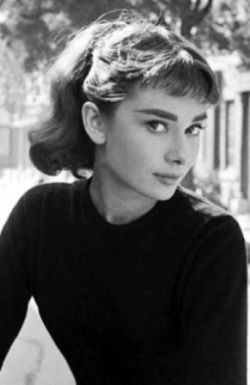 An elfin beauty that arose at the close of the golden age of Hollywood, Hepburn had aspects of both royalty and innocence. Her fame came from romantic comedies, where those qualities, and her nearly supernatural charisma could shine. Those attributes were muted in dramas, which made it harder for her to rise over the material, and much of her dramatic material left much to be desired: A Nun’s Story is poorly written and A Children’s Hour misses the point of the play. Then there is the romantic drama Green Mansions, which I do recommend as a film to watch while muttering “What the Hell.” (Really, it’s nuts.)
An elfin beauty that arose at the close of the golden age of Hollywood, Hepburn had aspects of both royalty and innocence. Her fame came from romantic comedies, where those qualities, and her nearly supernatural charisma could shine. Those attributes were muted in dramas, which made it harder for her to rise over the material, and much of her dramatic material left much to be desired: A Nun’s Story is poorly written and A Children’s Hour misses the point of the play. Then there is the romantic drama Green Mansions, which I do recommend as a film to watch while muttering “What the Hell.” (Really, it’s nuts.)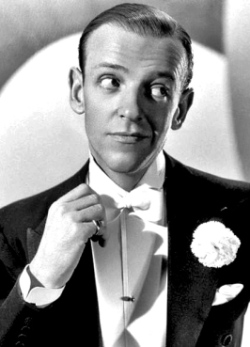 Fred Astaire is the king of cinematic dance. No one is even close. I’ve loved watching him dance all my life, though the movies he danced in didn’t always live up to his talents. But his finest are the cream of film musicals. Astaire is best known for his paring with Ginger Rogers. They made ten films together and changed the nature of dance on film. The top Astaire/Rogers films sparkled on three fronts: musical numbers, comedy, and a fantastical world. All three were very important to depression era audiences. Great dancing was always present in any Astaire film, but the comedy could be uneven. Strangely, it was neither of those, but the world building that split off the early films. In those, the two danced not in our world, but in an art deco paradise, beautiful and immaculate far beyond the dreams of reality. The lesser of the ten, such as The Story of Vernon and Irene Castle (1939) and The Barkleys of Broadway (1949) still had a Hollywood version of reality, but it wasn’t the marble dream of Top Hat and Shall We Dance.
Fred Astaire is the king of cinematic dance. No one is even close. I’ve loved watching him dance all my life, though the movies he danced in didn’t always live up to his talents. But his finest are the cream of film musicals. Astaire is best known for his paring with Ginger Rogers. They made ten films together and changed the nature of dance on film. The top Astaire/Rogers films sparkled on three fronts: musical numbers, comedy, and a fantastical world. All three were very important to depression era audiences. Great dancing was always present in any Astaire film, but the comedy could be uneven. Strangely, it was neither of those, but the world building that split off the early films. In those, the two danced not in our world, but in an art deco paradise, beautiful and immaculate far beyond the dreams of reality. The lesser of the ten, such as The Story of Vernon and Irene Castle (1939) and The Barkleys of Broadway (1949) still had a Hollywood version of reality, but it wasn’t the marble dream of Top Hat and Shall We Dance.
